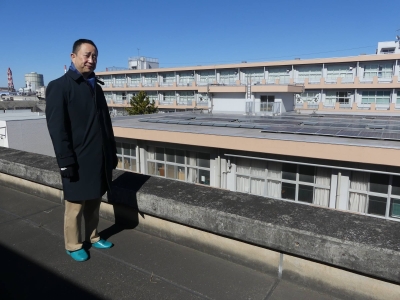Fujitsu and others have developed a device that uses artificial intelligence technology to judge the fat content of frozen albacore tuna, a widely used indicator to determine the quality of the fish.
Without relying on trained human visual inspections, the automated inspection device makes it possible to quickly determine whether frozen tuna portions should be distributed and labeled as high-quality, fatty bintoro tuna or used to make processed products.
It is thus expected to help expand the distribution of albacore tuna that can be eaten raw, the developers said Wednesday.
The companies will launch the device in Japan in June, targeting seafood processing firms and others. They aim to broaden the scope of automatic judgments to also cover other fish species with high distribution volumes, such as yellowfin tuna and bonitos, enabling assessments of the freshness, texture and taste of the fish as well.
Given the popularity of Japanese food in global markets, the developers are also looking to take the device overseas.
Fujitsu developed the device jointly with Tokai University and food processing device makers based in Shizuoka Prefecture.
After measuring wave patterns of fish meat by means of ultrasound analysis, the device uses AI technology to determine the fat content of the fish.
Compared with the conventional tail-cut grading process of visually inspecting the cross-section of the fish tail, the device helps reduce inspection times by up to 80% and enables full inspections.

















With your current subscription plan you can comment on stories. However, before writing your first comment, please create a display name in the Profile section of your subscriber account page.